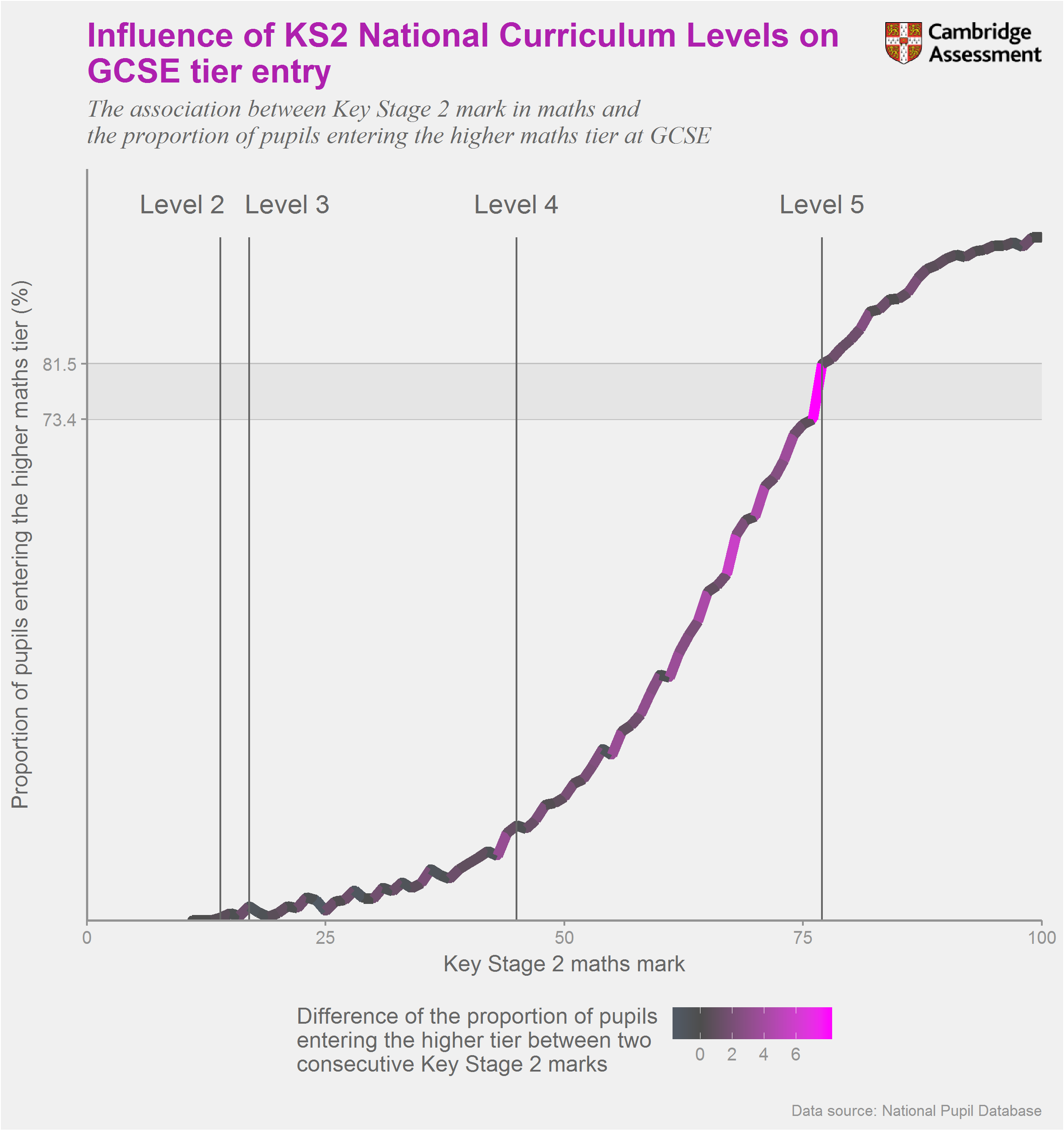March 2018
Summary
Since 2014, the primary school curriculum no longer uses the notion of 'levels' to measure pupils' progress. The expert panel that reviewed the national curriculum made this change for three main reasons.
First, children could label themselves and lose motivation as a result of their level. Levels also encouraged undue pace in learning at the expense of a deeper mastery of curriculum content. Finally, parents and pupils were confused about what levels actually meant as three different definitions coexisted.
In this Data Byte, we explore how levels given at the end of Key Stage 2 influenced pupils' likelihood of being entered for the higher tier at their GCSEs.

What does the chart show?
The chart shows the association between Key Stage 2 marks in maths and the proportion of pupils entering the higher maths tier at GCSE. The line is coloured according to the difference of proportion of pupils entering the higher tier between two consecutive Key Stage 2 marks. The bigger the difference, the brighter the colour. The vertical lines indicate the Key Stage 2 Level thresholds for maths.
The data are from the National Pupil Database (NPD). We included in the analysis 106,519 pupils who obtained a maths GCSE in June 2016 and had Key Stage 2 maths mark data available in 2011. Students taking Edexcel maths GCSEs were not included because their tier of entry was not recorded in the NPD.
Why is the chart interesting?
The chart shows that the biggest jump in the percentage of pupils entering the higher maths tier at GCSE occurs right at the boundary of Key Stage 2 level 5. 73.4% of pupils falling one mark short of level 5 entered for the higher tier compared to 81.5% for pupils with the lowest mark of level 5. This suggests that using levels disproportionally discouraged level 4 pupils with high marks from being entered for the higher tier. This is in line with the concerns raised during the national curriculum review and the decision to stop using levels to measure pupils' progress in primary school.
Further information
Tim Oates, Group Director Of Assessment Research and Development at Cambridge Assessment and chair of the expert panel that reviewed the national curriculum between 2010 and 2013, gives more explanation on the reasons for levels being dropped and the national curriculum review here. More research on tiering at Cambridge Assessment can be found here.